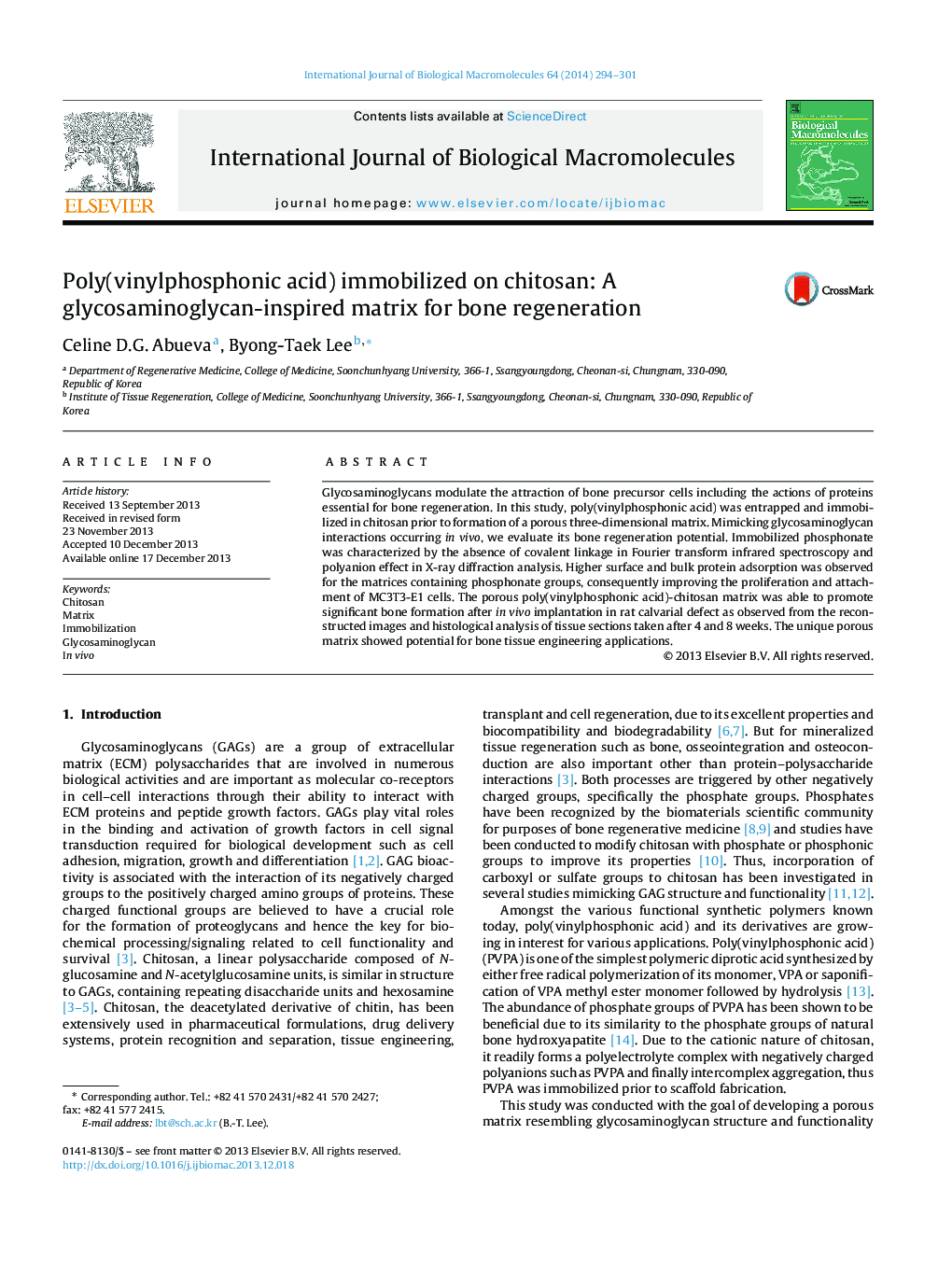| Article ID | Journal | Published Year | Pages | File Type |
|---|---|---|---|---|
| 1986634 | International Journal of Biological Macromolecules | 2014 | 8 Pages |
Abstract
Glycosaminoglycans modulate the attraction of bone precursor cells including the actions of proteins essential for bone regeneration. In this study, poly(vinylphosphonic acid) was entrapped and immobilized in chitosan prior to formation of a porous three-dimensional matrix. Mimicking glycosaminoglycan interactions occurring in vivo, we evaluate its bone regeneration potential. Immobilized phosphonate was characterized by the absence of covalent linkage in Fourier transform infrared spectroscopy and polyanion effect in X-ray diffraction analysis. Higher surface and bulk protein adsorption was observed for the matrices containing phosphonate groups, consequently improving the proliferation and attachment of MC3T3-E1 cells. The porous poly(vinylphosphonic acid)-chitosan matrix was able to promote significant bone formation after in vivo implantation in rat calvarial defect as observed from the reconstructed images and histological analysis of tissue sections taken after 4 and 8 weeks. The unique porous matrix showed potential for bone tissue engineering applications.
Related Topics
Life Sciences
Biochemistry, Genetics and Molecular Biology
Biochemistry
Authors
Celine D.G. Abueva, Byong-Taek Lee,
